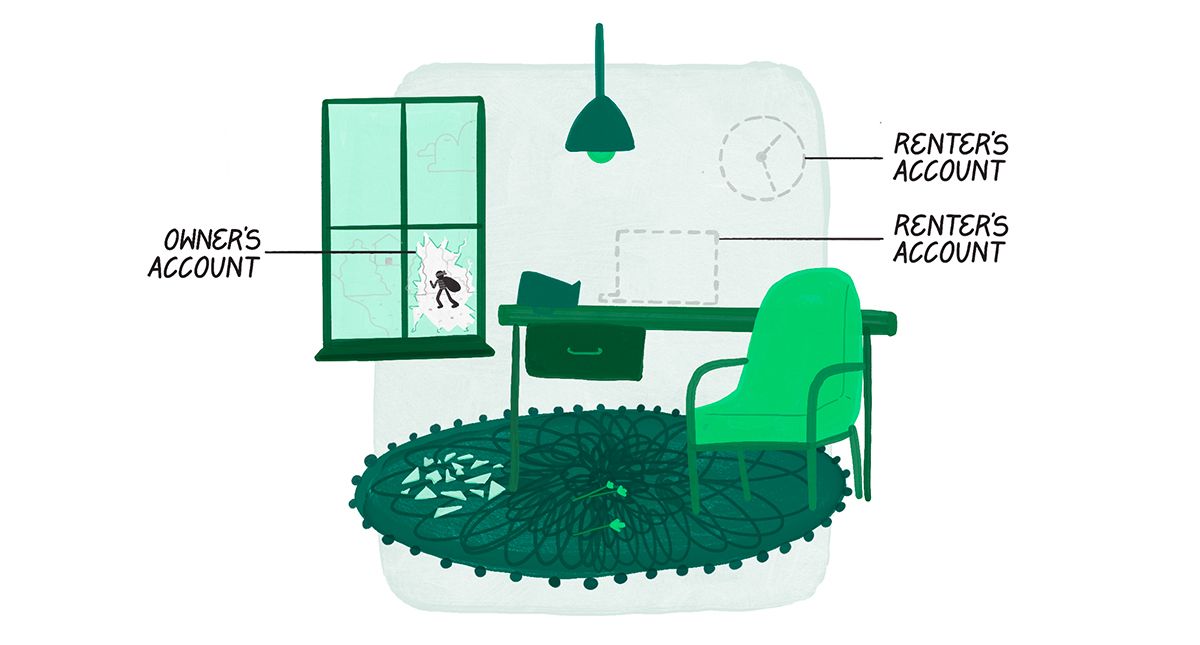It's not always clear what the landlord or tenant is responsible for when it comes to damages. We break it down for you here.
The geyser bursts in the apartment that you rent, leaving a gaping hole in your ceiling and water all over your laptop and your new leather jacket. Now what? Do you have to pay for a new laptop and leather jacket out of your own pocket? Or can you pass the bill to your landlord because they are responsible for maintaining the geyser?
There are so many questions when it comes to who is responsible for what when you are renting a property. Let’s break them down so that there are no grey areas and you can make sure you've got yourself covered.
What is your landlord responsible for?
Your landlord must make sure that the property you are renting is safe and suitable to live in. However, this responsibility only relates to the building and its fixtures and not to things you own in your home, like furniture, clothes, etc. If you could pick up your home and shake it, everything that falls out is your responsibility in terms of damage or loss.
Specifically, this means your landlord is responsible for:
Repairing any general damage to the building and its fixtures, including fair wear and tear
For example, if a crack appears in your bedroom wall, your electricity goes on the blink, or your roof starts leaking, your landlord is responsible for fixing it.
Repairing damage caused by Mother Nature
If the building is damaged by something Mother Nature brings along like floods, hail, mudslides, or the like, your landlord is responsible for repairing the damage to the building and making sure it’s safe to live in once again.
Damage when someone tries to break in and steal your stuff
If your apartment is damaged when it is broken into, your landlord will be responsible for repairing those damages but they are not responsible for replacing the stuff that was stolen.

Damage caused by fires, electric or gas faults, or vandalism
Repairing damage to the building due to a fire, electric or gas faults, or vandalism is also for your landlord's account.
Others suffering losses due to the fact that the property is not safe
For example, if a stair on a wooden staircase is unstable and a visitor to your home falls and hurts themselves as a result of it, the landlord will be responsible for the damages.
Failure to maintain the building in a safe and livable condition
For example, if you told your landlord about a leak in the roof and they didn’t do anything about it in a timely manner and some of your stuff got damaged, then your landlord is responsible for replacing/repairing your damaged stuff.
Your landlord would usually buy insurance to protect them against some of these losses.
What you, as the renter, are responsible for
Everything you move into the apartment is what you’re responsible for
Think of the apartment before you moved in – an empty shell. But if you’re moving in, your stuff is moving in with you. Everything that you moved through that front door is everything that you are responsible for, no matter what caused the damage.
Damage caused by you being negligent
You will also be responsible for damage to the property and others as a result of your negligence. For example, if you spill milk and your friend slips and breaks their wrist – you will both end up crying. Anyone who comes into your home might hold you accountable for any bodily injury or damage to their property that was a result of something you did.
Another example might be that you left the tap in the bath running and consequently flooded the apartment, damaging the carpets in the bedrooms. Since you caused the damage, you will have to cover the costs of any repairs or replacements.
Examples of situations where you and the landlord might both be responsible for fixing damages:
It won’t always be clear-cut whether you are solely responsible for damages or whether it falls on your landlord. Here are a couple of examples of where you both have a responsibility to put things right.
A burst geyser that causes damage to your belongings as well as the ceiling
Replacing the geyser and repairing the ceiling are things that the landlord will be responsible for. Damages to things like your phone or laptop will be for your own account.
A robbery where your stuff has been stolen and the property damaged
If there’s an unfortunate break-in where doors are damaged and your belongings were stolen, both you and your landlord will be responsible. Just like the above scenario, the landlord will be responsible for fixing damage to the property’s permanent fixtures, like the door. And you will be responsible for replacing your belongings that were lost during the robbery.
The best way to protect your things as a renter
The most obvious choice here is to go for home contents insurance. It is the most comprehensive insurance that a renter can get. It will cover all the things that you keep in your home. It will also give you personal liability cover for when something happens to another person in your home.
Bottom line: it may seem like a mission, but always read carefully through your lease, your landlord's insurance policy as well as your own. It will help you understand what you will be responsible for should something bad happen in your home.



